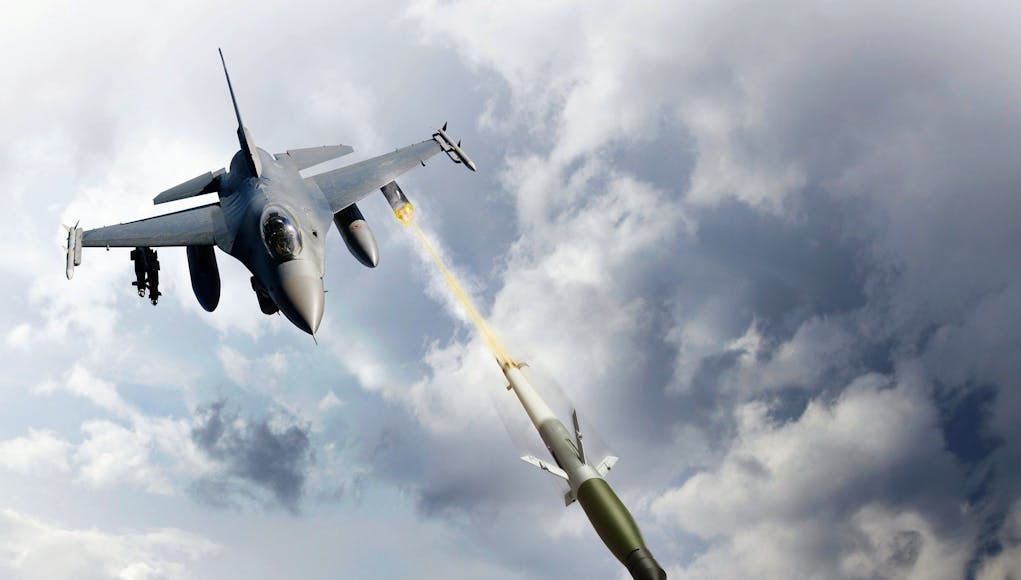BAE Systems has received a $225m order to manufacture additional laser-guided rockets for US military and allied customers.
The Department of Defense said Wednesday BAE’s information and electronic systems integration business will provide 9,999 Advanced Precision Kill Weapon Systems under lot 7 full-rate production to the U.S. Navy, Army and Marine Corps as well as the governments of Nigeria and Netherlands.
The order falls under a $618.3m indefinite-delivery/indefinite-quantity contract the company received in October 2016 from Naval Air Systems Command to produce lots 5 to 7 APKWS II rounds.
The contract notice states:
“BAE Systems Information and Electronic Systems Integration Inc., Hudson, New Hampshire, is awarded $225,034,247 for firm-fixed-price delivery order N0001919F2701 against a previously awarded indefinite-delivery/indefinite-quantity contract (N00019-17-D-5517) to procure 9,999 additional Lot 7, full-rate production units of the Advanced Precision Kill Weapon System (APKWS) II.
The procurement of the additional APKWS II weapons will upgrade the current 2.75-inch rocket system to a semi-active laser guided precision weapon in support of the Army, Navy, Marine Corps, Air Force and the governments of Nigeria and the Netherlands.
Work will be performed in Hudson, New Hampshire (70 percent); and Austin, Texas (30 percent), and is expected to be completed in September 2020. Fiscal 2019 procurement of ammunition (Army, Navy and Marine Corps and Air Force); and Foreign Military Sales funds in the amount of $225,034,247 will be obligated at time of award, none of which will expire at the end of the current fiscal year.
The Naval Air Systems Command, Patuxent River, Maryland, is the contracting activity.”
APKWS II is designed to replace the current 2.75-inch rocket technology with a semi-active laser guided weapon system.














Sadly America seems to have stopped giving its weaponry cool names.
My feeling is to avoid offending someone, somewhere on this earth.
That doesn’t sound like the Americans. Has there been an epiphany.
No it is because the Pentagon loves acronyms rather names. Though if a weapon is successful enough the men name it.
$22k for the guidance kit
Presumably another couple thousand for the Hydra rocket itself.
Pretty ok for a guided munition nowadays, even if it is a small one.
Bristol Aerospace of Canada have been selling the CVR-7PG kit for the last ten years. Our Apaches and latterly the Harrier use CVR-7. This also uses a laser seeker kit that is added to the nose of the rocket. I am really surprised that we’ve never purchased it. It’s a very cheap upgrade. that gives precision strike to an in-service weapon, that could be used against spotters on moped instead of Hellfire/Brimestone which has a greater range than BAE’s version.
Perhaps the UK see Martlet and further developments from it as providing this capability across multiple platforms?
If the CVR-7 PG Kit uses a nose mounted laser kit, how is that a cost saver? APKWS allows a customer to use existing stocks of warheads. The only additional purchase is the Laser Kit mounted behind the traditional warhead. Also, how does CVR-7 PG Kit overcome the Armour Piercing issue if the warhead is mounted behind the ‘front end nose’ Laser Kit i.e. The Munroe Effect?
Guided CVR-7 should be a much lower cost option for Apache and perhaps Typhoon.
It would provide a quantum increase in guided firepower for the Apache fleet, as said, particularly in lower end anti insurgency ops.